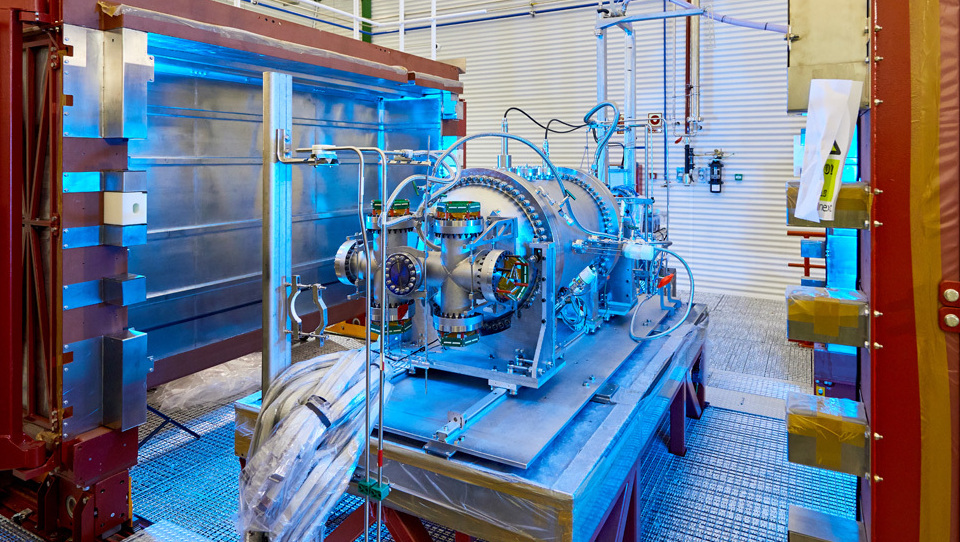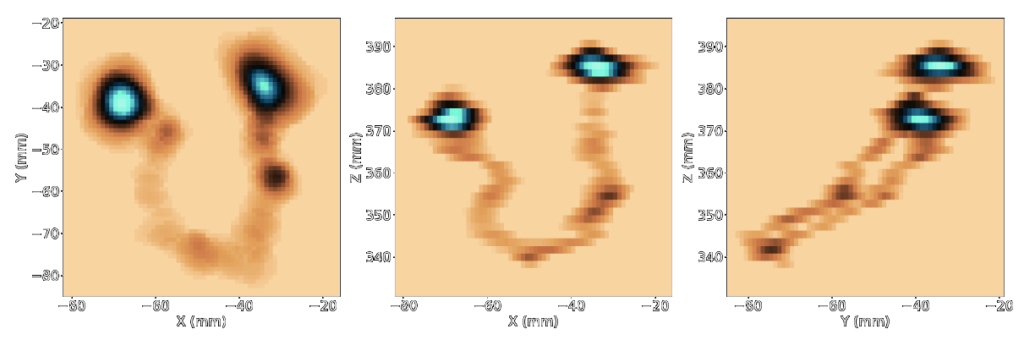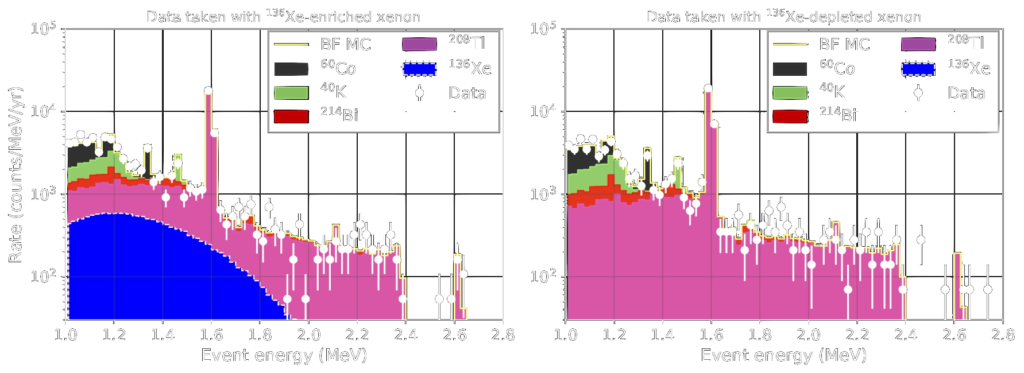
The NEXT-White (NEW) detector constituted the second phase within the NEXT program, being a 1:2 scale model of NEXT-100. Then, it was the first radiopure large-scale demonstrator of the NEXT technology.
The detector was operating at the Laboratory Subterráneo de Canfranc from 2016 to 2021, with the main goals of characterizing the external background and measuring the two-neutrino double beta decay half-life of 136-Xe.
With a drift length of 530.3 mm and an active volume diameter of 416 mm, the NEXT-White TPC contained 4.3 kg of gaseous xenon, when operating at 10 bar. The cathode and the anode were placed at both extremes of the TPC, and a gate close to the anode generated the electroluminescent field. The event detection inside NEXT-White was possible thanks to two dedicated readout planes: 12 photo-multiplier tubes (PMTs) behind the cathode constituted the so-called Energy Plane, while the Tracking Plane comprised a dense array of 1792 Silicon Photomultipliers (SiPMs) behind the anode. The backgrounds entering the active volume were reduced with an internal shielding made of copper. During the low-background data-taking period, two lead structures surrounding the pressure vessel were also placed, and a Radon Abatement System working at the laboratory delivered 222-Rn-free air.
This detector provided fundamental results during the first half of its operation period (2016-2018), since it demonstrated two of the basic features inside the NEXT experiment. On the one hand, the energy resolution was measured to be lower than 1% FWHM at the Qββ, providing the best energy resolution within the xenon experiments. On the other hand, NEW exhibited the great event identification capabilities expected with the NEXT technology. And not only that, the inclusion of the Richardson-Lucy deconvolution algorithminside the reconstruction chain allowed us to obtain highly defined images of the events (as beautiful as the one presented below), leading to an improvement in the signal vs background discrimination.

Reconstruction of a ββ candidate event
From the beginning of 2019 until mid-2021, the data-taking of NEW was devoted to the ββ2v analysis. This comprised the assessment of the backgrounds affecting the experiment (most of them will be similar for NEXT-100) and also the measurement of the two-neutrino double beta decay half-life of 136-Xe. During this long period two extended Runs were taken with the same low background conditions, but a different concentration of 136-Xe inside the detector. This fact —together with the excellent event characterization commented above— allowed us to obtain a value for the half-life using a unique background subtraction technique, novel in the field, despite the small dimensions of the NEXT-White chamber. Apart from that, and as crosscheck, a background-model-dependent strategy was also exploited, providing a consistent value. Both of them are, also, compatible with the results provided by other experiments in the field.

Backgrounds and ββ signal fits for the two low-background Runs
